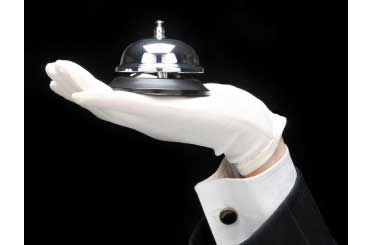|
|
| Servant Leadership |
| By Caterina Spinaris |
| Published: 12/14/2009 |
 A lieutenant who is respectful and available to listen
and answer questions. A captain who helps subordinates
secure training that enhances their skill sets. A C.O.
who treats inmates fairly, mentors new C.O.s, and helps
coworkers pull things together in their areas. A warden
who shapes the facility’s culture for the benefit of both
employees and offenders.[1] A retired Director who volunteers
his time to set up a program that improves the
character development of both staff and offenders.
A lieutenant who is respectful and available to listen
and answer questions. A captain who helps subordinates
secure training that enhances their skill sets. A C.O.
who treats inmates fairly, mentors new C.O.s, and helps
coworkers pull things together in their areas. A warden
who shapes the facility’s culture for the benefit of both
employees and offenders.[1] A retired Director who volunteers
his time to set up a program that improves the
character development of both staff and offenders.
These are examples of elements of servant leadership. The concept of the servant-leader was proposed by Robert Greenleaf.[2] Mr. Greenleaf stated that for servantleaders, service comes first. Leadership is a secondary focus, sometimes occurring almost incidentally. Their primary motivation is to ensure that others’ highest priority needs are being met. The pursuit of power, influence, fame or wealth is secondary for them, if it attracts them at all. When we think of servant-leaders, persons such as Mahatma Gandhi, Abraham Lincoln, Martin Luther King, Jr., and Jesus of Nazareth come to mind. Servant-leaders do not emerge through a power grab. Rather, servant-leaders lead through their active concern for the betterment of others’ condition. People grow to trust that servant-leaders genuinely have their best interests at heart, and as a result they freely choose to follow them and their vision for the future. Servant-leaders have the courage to take bold steps and break new ground, and they invite others to join in. Servant-leaders are honest and humble, as they recognizing their limitations and their need for others’ input and contribution. Servant-leaders are committed to their goals while remaining open to feedback. They want to see their vision realized regardless of personal cost. They care more about the fulfillment of the dream than about personal comfort, gain or glory. One of the outcomes of servant leadership is the forward movement and personal growth of those around servantleaders. Followers become better informed, their potential is more actualized, and their situation is improved. Because of servant-leaders’ ultimate goal—the genuine desire to improve people’s condition—servant leadership is not limited to those of highest rank. Servant leadership can and should be practiced throughout institutions, organizations, communities and families. It is a matter of values, motives, vision and focus, not a matter of title. Daily you are given opportunities to help meet others’ high-priority legitimate needs—staff’s, families’, offenders’. What will you do with these opportunities? I urge you to expand your sphere of influence and become an agent of positive change by serving others. In serving you’ll meet not only their needs, but also some of your own highest yearning for significance and joy. Try it. I guarantee you that you will never be the same. This day, what will you choose?
|
MARKETPLACE search vendors | advanced search

IN CASE YOU MISSED IT
|


Comments:
No comments have been posted for this article.
Login to let us know what you think